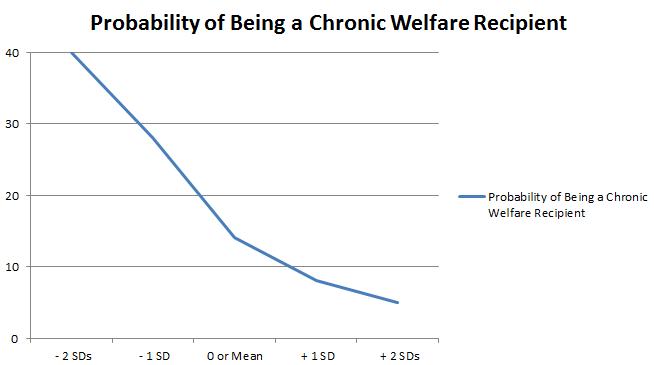I’m continuing my series on the chapters of “The Bell Curve”, by Herrnstein and Murray. If you are interested in the posts so far, just go to the category selections on the right sidebar, I’ve grouped them together under The Bell Curve.
So far we’ve taken a look at the impacts that the socioeconomic status of the parents of white women in the NLSY have on various life outcomes. Included in those outcomes so far is poverty, education, Employment and the family. This post deals with welfare and the dependency on welfare.
The first look at the impact of SES has welfare is what the probablity is of a white woman going on welfare within a year of her first birth. The data presented below shows that probability with poverty and marital status taken into account:
As probability of going on welfare moved from the poorest, about 28%, to the wealthiest, about 19%, the trend is down. However, the authors report that the results are not statistically significant.
But another picture arises altogether when we look at chronic welfare recipients:

Here the results are dramatic. The probability of a white woman in the NLSy study is greatly influenced by the socioeconomic status of her parents. The authors don’t explain what might cause the change in the mild predictive value of SES in welfare at all vs. the highly predictive value that it plays in chronic welfare dependency. However, they do hint that education plays a role somehow.


